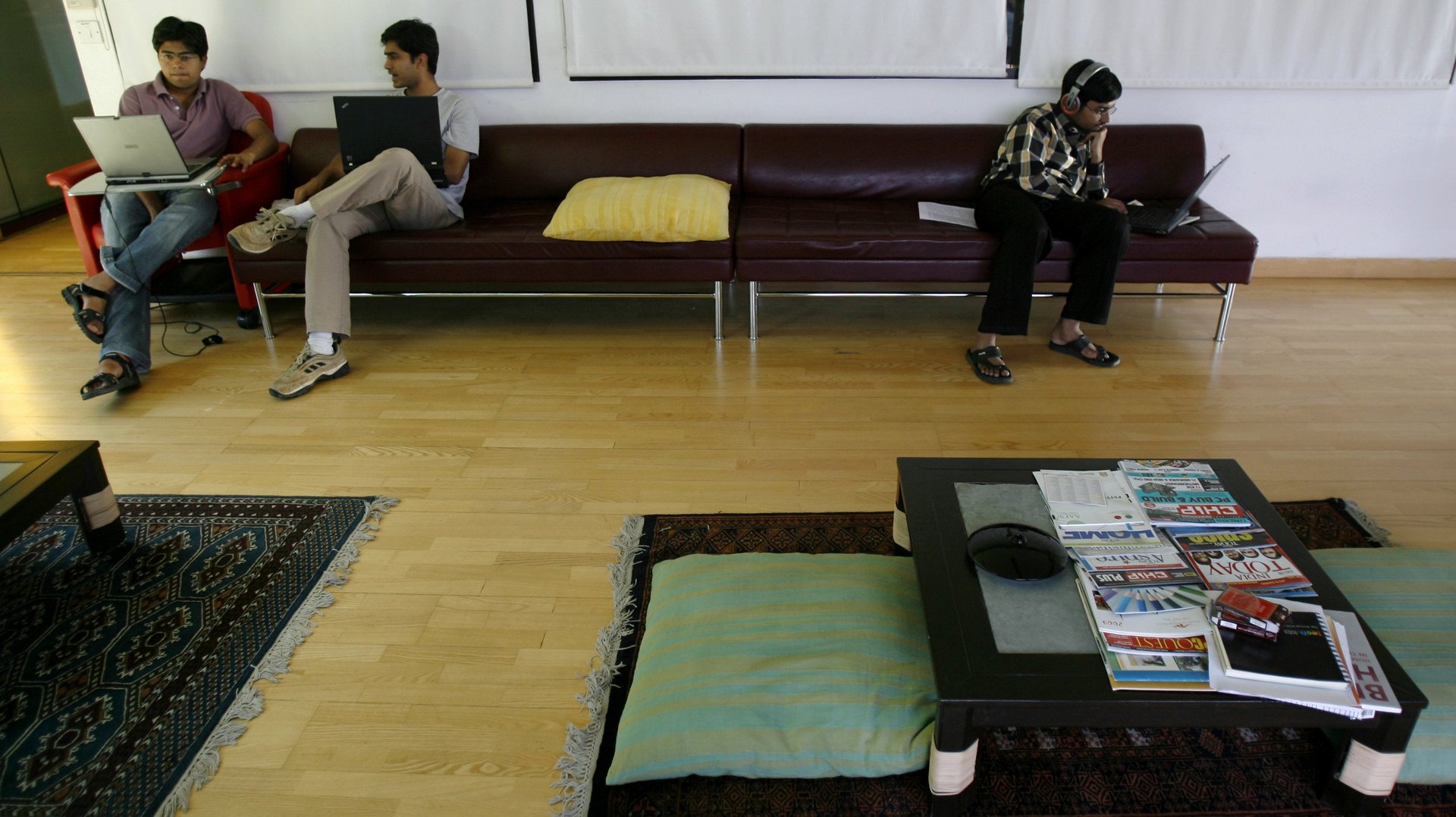The latest perk from companies looking to lure millennials: offices that double as homes
The latest way companies are trying to entice people to the office is to make it a home away from home.


The latest way companies are trying to entice people to the office is to make it a home away from home.
Architects and designers are being charged to create offices with relaxed vibes in mind in the hope that it will blur the distinction between home and office, making the latter a more appealing place for employees to spend time with colleagues. Convincing workers to stay in the office is hard at the best of times. But it’s made harder still by employees who are accustomed to working remotely, managing their own schedules, and staying in their pajamas until noon.
Perks such as bike racks, shower facilities, open layouts, and breakout sessions have helped make the workplace a friendlier place to be, but they fail to address why so many people enjoy working remotely: they save time on commuting, they can choose the type of space they want to work in, and they feel more at ease.
According to Gordon Wright of global design firm HOK, that means moving away from a workplace that’s ”cold, slick, hard and uncomfortable” and thinking instead about the aspects of home working that are most appealing. “Let’s give them places where if they want to curl up on sofa and do email for half hour that’s acceptable,” he says.
San Francisco-based Studio O+A, for example, has been designing workplaces for Cisco, Yelp, and Microsoft that have a “residential feel,” so the office becomes a place where people want to hang out as they would at a trendy coffee shop or, indeed, on their sofa at home. At a recent office furniture trade show in Chicago, this trend was dubbed “resimercial.” Often this involves providing a “palette of postures,” where workers can choose from traditional desks to couches, soft textures, and cozy environments, to make people feel more comfortable. According to the Nicola Osborn, design director of London studio MoreySmith, diverse environments are key to fostering a collaborative and creative work environment. That’s why they made them central to its redesign of Coca-Cola’s UK head office, with the “relaxed and open environments encouraging interaction amongst colleagues.”
To attract and retain young workers, some companies are seeking inspiration from college campuses for their corporate complexes, with gyms, coffee shops, and bars built in. As property developer Sam Morreale told the Wall Street Journal (paywall), “the work force’s learning environment is now the environment where they want to earn,” so employers need to capture some of that experience to make their youngest workers comfortable.
Creating more cosy office environs may reflect new attitudes towards remote work. Last year, 43% of US employees worked remotely at least some of the time, according to a Gallup poll. When a company is in trouble and in need of innovative ideas, the possible productivity gains of remote work are often considered less important than the negative impact a distributed workforce can have on engagement.
Former Yahoo chief Marissa Mayer caused a storm in 2013 when she banned remote work, saying “some of the best decisions and insights come from hallway and cafeteria discussions, meeting new people, and impromptu team meetings.” IBM, a company once lauded for its flexible work arrangements, asked workers to return to the office earlier this year. Bank of America and Best Buy are also scaling back their remote-work policies, while others are opting for perks that include paying workers to live near the office to get them to spend more time there.
Peter Capelli, a management professor at Wharton Business School, reckons IBM’s decision to turn its back on remote work is part of an “agile management” strategy that sees face-to-face communication and collaboration as essential drivers of innovation. Studies have found engagement levels drop the more time employees spend off-site.
According to a 2015 paper, stay-at-home workers can also have a negative impact on the rest of a workforce. The study found that there is a tipping point when it comes to how many remote workers a company has: once a company reaches that point, people still working in the office see it as a dispiriting place, and choose to stay at home too. That’s problematic, because an environment that is conducive to building relationships can spur friendships that are more likely to make co-workers engaged and happier at work, according to Christine Riordan of the University of Kentucky.
Of course, there are downsides to offices becoming too homelike. For one, you might discover your colleague has some peculiar habits. More seriously, spend too much time in the office—however comfortable it is—and you risk missing what’s important in the world outside.